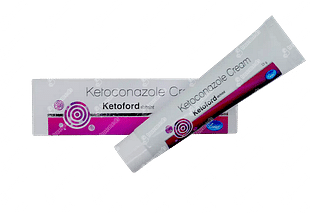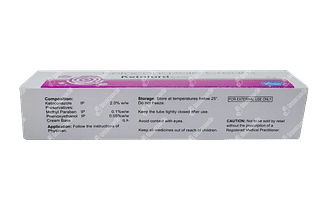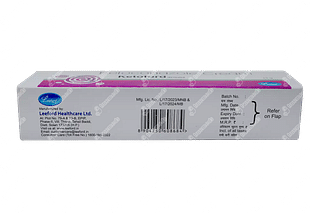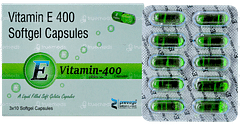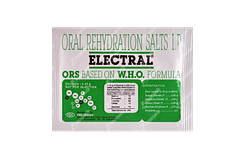The common side effects of Ketoford 2% cream are:
- Burning sensation- Ketoford may have a burning sensation when it is applied. It is usually not a cause for concern; however, report severe and persistent burning to your doctor.
- Skin redness- The skin of the affected area and surrounding areas where the cream comes into contact may become red. It usually goes away as the body adapts to the medicine. Report severe redness to your doctor immediately.
- Rashes- The skin may become red and develop rashes that itch and burn. Report the development of rashes upon administration of Ketoford cream to your doctor.
Managing side effects
The above mentioned side effects can be managed in the following ways:
- Burning sensation: Apply a cool chamomile tea compress or aloe vera gel to soothe the affected area.
- Skin redness: Use calendula-infused oil or chamomile tea as a gentle topical application to reduce redness and inflammation.
- Rashes: Apply a cold compress or damp cloth infused with chamomile tea to provide immediate relief and reduce inflammation. Additionally, keep the skin moisturised and sanitary using natural oils such as coconut oil or calendula-infused oil.
Precautions
Pregnancy
Talk to your doctor or pharmacist if you are going to apply Ketoford creams when you are pregnant or planning to get pregnant. Its effects on pregnancy are unknown, but it may be unsafe. Seek the doctor's guidance for more information.
Breastfeeding
Breastfeeding while using Ketoford 2% cream is generally considered safe. Studies suggest that the cream does not pass into breast milk. Please consult your doctor for specific advice.
Alcohol
No interaction is reported for using Ketoford 2% cream while you are consuming alcohol. Kindly consult your doctor for specific advice.
Liver
There is no known interaction between Ketoford cream and liver-related issues, making it safe to use in patients with such conditions.
Kidney
Ketoford cream can be used in patients with kidney-related issues, as no interaction has been identified between the cream and kidney function.
Using machines and driving
The usage of Ketoford 2% cream does not affect the ability to drive or operate machines.
Allergy
When you are allergic to any of the key ingredients of Ketoford cream, stop taking the medicine and inform the doctor. The doctor will decide about the further use of the cream.
Use in children
Ketoford should only be used in adults aged 18 and above. The dosage is to be prescribed by the doctor.
Use in older patients
The effect of Ketoford cream on older patients may vary based on their disease and general health conditions. Kindly consult your doctor for more information.
Interaction
Drug-drug interaction
Ketoford, 2% cream, does not usually interact with any orally taken medications. However, it can interact with-
- Medicines that are used to treat inflammatory conditions (Ex. Betamethasone, Hydrocortisone)
Drug-food interactions
- Ketoford cream does not interact with food items. Consult your doctor for more information.
Drug-disease interactions
Ketoford creams can interact with diseases, including:
- Respiratory issues like asthma
- Sulfite allergy
